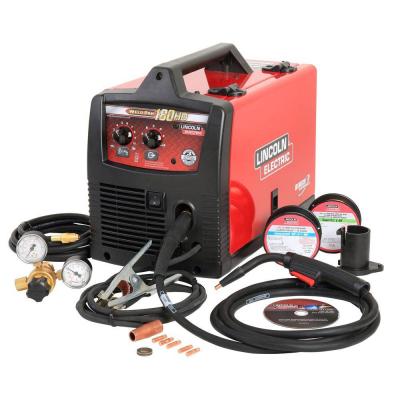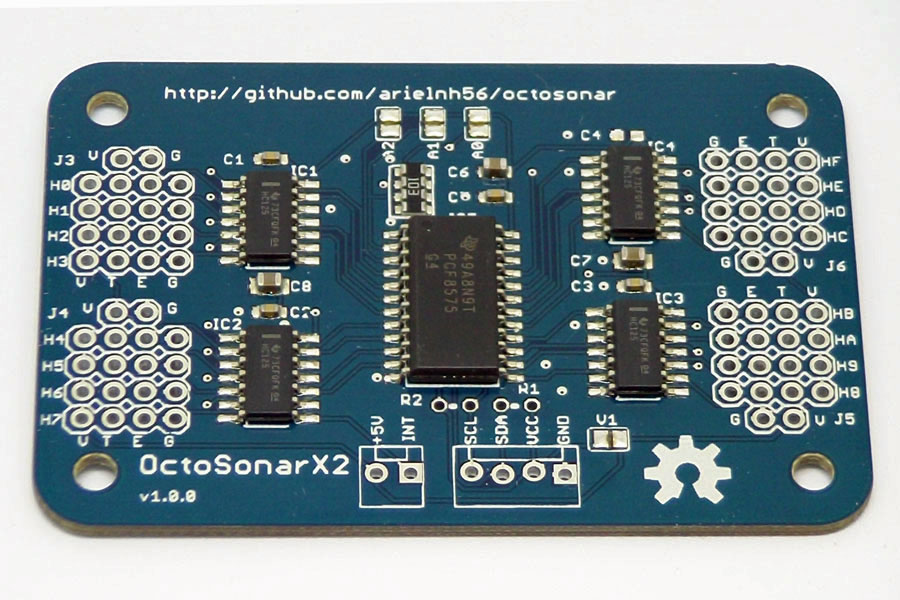I did some internet research on what would be the best first welder to buy as a beginner with real projects in mind. MIG seemed to be the process to go for as it is easy to learn and useful for a wide range of projects. Long ago, before there were auto-darkening lenses, I had a cheap stick welder and found it really hard to stick metal together with it with any kind of tidiness. I concluded at the time that stick welding is hard.
220V seems to be needed for reliable quality welds. I concluded that the only decent option under $1000 is the Lincoln Electric 180 “retail edition” machine – and it is actually under $700. Lincoln produce the same welder with different badges for the various big-box stores. I think this is to avoid the special offers these stores do – “if you can find the same product at a lower price we’ll undercut them 10%”. As these welders are different part numbers they are technically exempt from this. In my case I picked up the Home Depot edition, the Weld Pak 180HD. They do make a professional version of the same welder, with beefier wire-feed parts and perhaps more “Made in America” content, for about $200 more. Many of the online forums have professionals recommending this as the best hobby MIG, and one they use for small portable jobs. Lincoln also do a “dual” 180 which runs one either 110 or 220, but not in a “retail” form, so I deemed that out of my budget.
The unit comes with fittings for flux-core and MIG wire, small spools of each wire type and includes the pipe and valve for the gas bottle.
This is not enough to weld with “out of the box” unless you want to go blind and burn holes in yourself, so I also picked up at Home Depot
- Two Lincoln auto-darkening welding helmets . No way was I going to do this blind, and for this to be a non-solitary hobby, then cannot be only one
- Welding gloves
- Chipping hammer
- Wire brush
- Right angled magnetic clamp thingy
- Welding pliers
Unboxing was straightforward, everything listed in the parts list was present and correct and very shiny. The first challenge was plugging the thing in. The only 220V outlet we have is for the dryer and it is of the 30A NEMA 10-30 flavor, while the plug on the welder, while only being a 20A unit, is a 50A NEMA 6-50. A couple more trips to Home Depot produced this adapter cable, using a standard dryer power cord and a utility box. Not pretty, or very long, but it works. With this on the unit I can get the welder just out the side door of the garage. Note the strain relief and the labeling – this is a 50A format socket, but not rated for 50A!
With the cable installed and wearing my tatty old Belstaff motorcycle jacket, I started making some test beads with the flux-core and welds on bits of scrap. Nice beads were fairly easy to do as long as the settings were right and I kept the gun moving at the right speed. Practice – Practice – Practice. The flux core leaves very little slag, and that cleans with the wire brush, so I haven’t needed the chipping hammer at all.
This initial test showed up that I needed more stuff – proper welding jacket, proper work surface, welding cart, and sun shade. These have now been acquired.
I don’t have other units to compare to, but I can say that this beginner is very happy with the Lincoln Electric Weld Pak 180HD. It really is a million times easier than my old stick welder and blind helmet, and I was able to to make clean looking beads and welds after only a few practice runs.











3 Responses
You were a wealth! Albeit a wealth I had previously aquired buying my first welder post lincoln stick welder that I rarely used for all the same reasons! Got my 180HD when my Wife drove my 8′ lumber rack under the 7′-6″ garage and tore the whole thing off and destroyed much of it. That was my first project and everyone who knew asked where I purchased the new one and what I paid! Yes, it looked that good! I was surprised given the welding I had done previously with the stick welder. Now many pros say mig operators don’t know how to weld. I say f**k em! Anyway thanks for your page. I’m a former Livermore resident!
Thank you for your informative post, blog “thingy” (aka welding magnet”) I’m not wanting to learn welding like I want to work on a better “long shot”, or other current passions but I’m short on cash and other passions are requiring welding. Some quotes I’ve received indicate that “Professional” is now more of a buzz word than a way of life. It’s like hash tag or “Uber” … anything, Stolen terms from existing languages…. alas I digress, but if I knew then…. I’d be a rich “lawn mower man”, sorry, Professional Landscaper.
Since June have you worked with the 180 enough to update info for noobs?
I’m looking at a used Miller 140 which seems really nice but the 3/16’s max is somewhat limiting right out of the gate. Thank you for taking the time to share/educate! I (I’m sure many we’s too) appreciate your help.
Tod
Sorry – I don’t check the comments often or indeed update this site much. I’ve used the unit for various oddments and repairs. The two big projects I’ve done are the front gate to our side-yard, which is mainly 1.5″ x 1/8″ tube with some art-deco detail stuff in smaller tube, and a shelving rack for the she-shed that holds 30 27gal storage bins. Also modified my lathe stand (see my Hackaday.io) and I’m about to start on a 96×30 work bench from 2x2x0.095 tube. Unless I get into much smaller stuff or much bigger stuff or exotic materials, I don’t think I’ll ever need another welder.